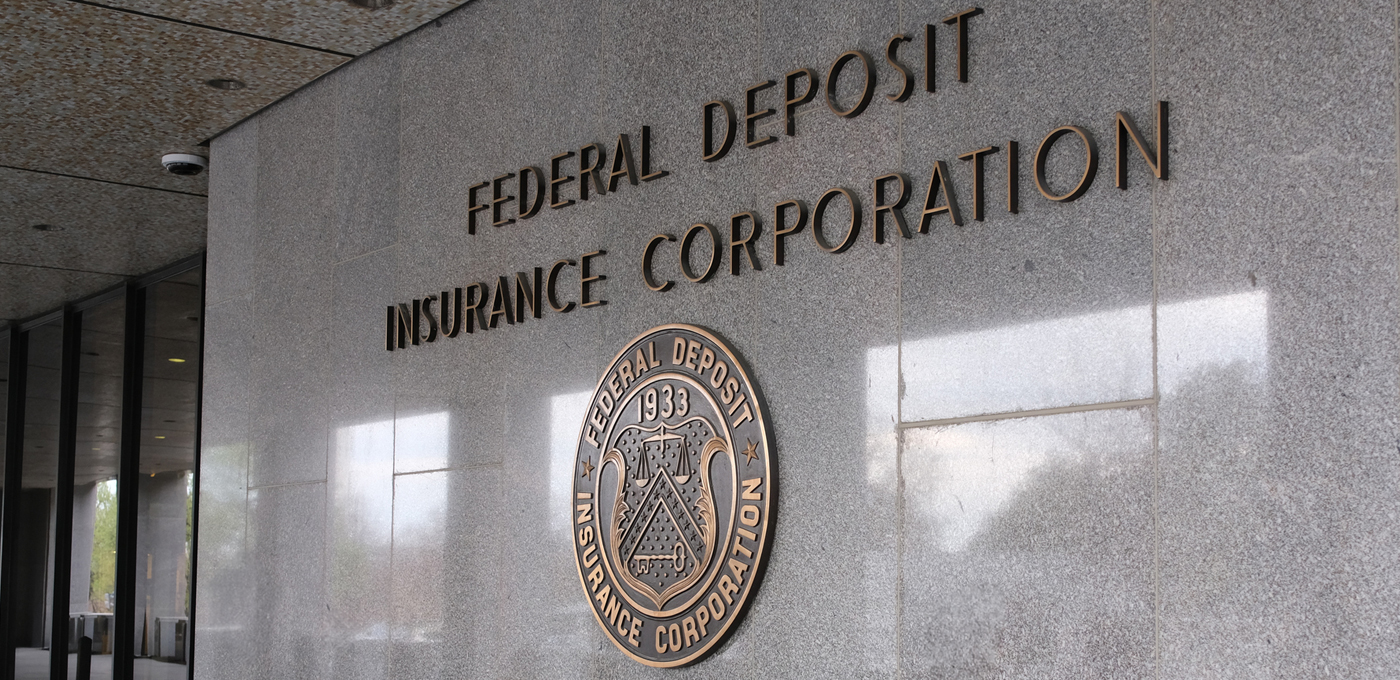Savings
Everyday savings made simple, along with money market and health savings accounts for specific needs.
FDIC-Insured - Backed by the full faith and credit of the U.S. Government
Checking with perks or just the basics.
Earn interest and checking account bonus rewards.
Get perks plus no monthly minimum and low fees.
Keep it simple with this low-cost checking account.
Build your balance with no overdraft fees holding you back.
Find the checking account that fits your life.
Enjoy the added benefits of a top-tier account.

Everyday savings made simple, along with money market and health savings accounts for specific needs.
Put your financial wellness first with options from basic to health savings accounts.
Open our basic savings account if you want low (or no) fees.
Give family members under 18 a savings account head start.
Step up your savings with a high-yield money market account.
Got a high-deductible health plan? You're eligible for an HSA.


Explore options to reduce your mortgage rate or monthly payments and consolidate credit card debt, or fund other financial goals.
Auto loans to credit builder loans–borrow with confidence from your local bank.
Buy a new car, truck, or SUV, or refinance an auto loan.
Finance your adventures on open waters or the open road.
Get behind the wheel of your dream RV at a great rate.
Reduce your rate and increase your borrowing power.
Get the rate and flexible terms. No collateral needed.
Build or rebuild your credit history and your credit score.



Bank online or on the go—free e-statements and digital wallet included.
Manage your finances whenever, wherever.
Go paperless. Cut clutter and enhance security.
Go cashless with our safe, convenient virtual wallet.
Check your credit score and protect your credit.
Send and receive money the fast, safe, and easy way.
Send and receive wire transfers safely and securely.



Low fees and minimums, high degrees of automated banking.
Cash management tools, plus credits to offset fees.
Easy interest and operating expense management.
For small to mid-size businesses with low volumes.
Find the account that helps grow your business.
The documents you'll need for your type of business.


Prevent check and ACH fraud from spoiling a good day. Access ACH Debit & Credit Positive Pay via digital banking to help combat fraud.



Start-up funds, working capital or financing for expansion, serviced in house.
Owner-occupied or investment, fixed or variable rates.
Flexible terms with fixed or variable rates.
Flexible terms with amortizations coordinated to the equipment's useful life.
Provides working capital for growing businesses.
Longer terms and low fixed rates for Missouri-based businesses.
Long-term, fixed-asset loans for land, building, and/or equipment.
Experts to help customize your loan for your unique needs.

Finance your commercial real estate project with the people's choice for "best commercial bank" and "best bank."


Prevent check and ACH fraud from spoiling a good day. Access ACH Debit & Credit Positive Pay via digital banking to help combat fraud.

Finance your commercial real estate project with the people's choice for "best commercial bank" and "best bank."

Finance your commercial real estate project with the people's choice for "best commercial bank" and "best bank."

Explore options to reduce your mortgage rate or monthly payments and consolidate credit card debt, or fund other financial goals.





Prevent check and ACH fraud from spoiling a good day. Access ACH Debit & Credit Positive Pay via digital banking to help combat fraud.

Everyday savings made simple, along with money market and health savings accounts for specific needs.

Finance your commercial real estate project with the people's choice for "best commercial bank" and "best bank."

Checking with perks or just the basics.

Everyday savings made simple, along with money market and health savings accounts for specific needs.
Put your financial wellness first with options from basic to health savings accounts.

Invest in your future with a safe, secure CD or IRA. Lock it in and let it grow.

Explore options to reduce your mortgage rate or monthly payments and consolidate credit card debt, or fund other financial goals.
Auto loans to credit builder loans–borrow with confidence from your local bank.

Rewards, cash back, cash-secured—find what you want in a credit card right here.

Grab cash or pay with a swipe or tap from your checking or savings account.

Bank online or on the go—free e-statements and digital wallet included.

Partner with a local bank that's invested in a lifetime of financial wellness.

Power save with our limited-time money market and CD special offers.

Low fees and minimums, high degrees of automated banking.

Make your funds work harder to meet your short-term needs.

Prevent check and ACH fraud from spoiling a good day. Access ACH Debit & Credit Positive Pay via digital banking to help combat fraud.
Cash back, rewards—and more of what you want in a business credit card.

Grab cash or cover everyday expenses, everywhere Visa® is accepted.

Experience the latest point-of-sale system with Clover from Fiserv.

Start-up funds, working capital or financing for expansion, serviced in house.

Finance your commercial real estate project with the people's choice for "best commercial bank" and "best bank."
Bank anywhere—all the essential money management tools included.

Partner with a local bank that's invested in a lifetime of financial wellness.

Prevent check and ACH fraud from spoiling a good day. Access ACH Debit & Credit Positive Pay via digital banking to help combat fraud.
Power save with our limited-time money market and CD special offers.

Finance your commercial real estate project with the people's choice for "best commercial bank" and "best bank."
Partner with our expert business lenders for a personalized experience.

Finance your commercial real estate project with the people's choice for "best commercial bank" and "best bank."
Home loans serviced in-house with the one-on-one attention you deserve.

Explore options to reduce your mortgage rate or monthly payments and consolidate credit card debt, or fund other financial goals.
Take an expert guide on your homeownership journey.

Calculators and an in-depth glossary to keep you informed.

Ready to make an offer? So are we. See what's new.

Find a banking or mortgage center near you.

Email, call, or pay us a visit. We'd love to see you.

Prevent check and ACH fraud from spoiling a good day. Access ACH Debit & Credit Positive Pay via digital banking to help combat fraud.
Take a trip down memory lane all the way back to 1867.

Everyday savings made simple, along with money market and health savings accounts for specific needs.
Learn about our commitment to community support.

Finance your commercial real estate project with the people's choice for "best commercial bank" and "best bank."
Pursue a career with purpose, possibility, and people who care.




Managing Your Money | March 30, 2023
In the wake of the Silicon Valley Bank collapse, our staff has received many questions regarding the security of their funds. It is through these conversations that we understand the urgency of educating our customers and fellow community members on the ways you can protect your funds with Federal Deposit Insurance Corporation (FDIC) insurance.
As CEO & President of First State Bank, I am aware of the importance of regulations that promote fairness and protect consumers. Additionally, I serve as Chair of the Federal Reserve Bank of St. Louis’s Community Depository Institutions Advisory Council (CDIAC) and am the former Chair of the American Bankers Association (ABA) Community Bankers Council and a member of the ABA Board of Directors. In these roles, I focus on communicating the impact of policy decisions on the people we serve and providing input on ways to ensure the safety and stability in the banking industry.
First State Bank agrees with Secretary of the Treasury Janet L. Yellen, Federal Reserve Board Chair Jerome H. Powell, and FDIC Chairman Martin J. Gruenberg, “The U.S. banking system remains resilient and on a solid foundation, in large part due to reforms that were made after the financial crisis that ensured better safeguards for the banking industry.” We understand concerns regarding the impact of this bank failure on the entire banking industry and hope that our cosign can calm those worries.
One of the most common questions our team has received is “What is FDIC insurance and am I covered?” Here’s the answer: The FDIC insures up to $250,000 in a deposit account if the unlikely event of bank failure were to occur. You do not have to purchase this insurance, just by opening a deposit account with First State Bank of St. Charles or another FDIC-insured bank, you are automatically covered.
For the average person, the $250,000 standard insurance amount is more than sufficient. However, there are many people who require additional coverage. It is important to note that the $250,000 figure is per depositor, per insured bank, and for each account ownership category. Increasing your FDIC insurance is possible when you add a spouse to a deposit account, set up trusts with multiple beneficiaries, or establish multiple account types.
You may think that splitting your funds across several institutions will keep you covered, but that isn’t necessary. First State Bank, like thousands of other financial institutions, is a member of the IntraFi® network.1 This network allows customers to bank with us even if they have accounts that exceed the $250,000 standard insurance amount. Funds are conveniently and securely2 put into demand deposit accounts, money market deposit accounts, or CDs based on the specific needs of account holders.
IntraFi® is a great option for businesses carrying high balances that may not be eligible for standard FDIC insurance. Contact one of our business experts to find out how we can help.
Lastly, we truly value the rapport we have with each of our customers. We have had so many optimistic conversations in the last few weeks and appreciate the opportunity to share our expertise to alleviate concerns. To see how the insurance rules and limits apply specifically to your accounts, I recommend using the FDIC’s free electronic deposit insurance estimator tool. If you need assistance using this tool, have questions or concerns regarding FDIC insurance, or would like to open or modify an account, please schedule an appointment with a First State Bank banking center manager or contact our Customer Care team at 636-940-5555.
Have an account elsewhere? Check to see if your money is insured .
Check here to see if a specific account type is FDIC-insured.
Read more on actions the U.S. Department of the Treasury, Federal Reserve, and FDIC are taking to protect the U.S. economy and depositors at Silicon Valley Bank and Signature Bank.
Summary of FDIC Deposit Insurance Coverage Limits
| Account Type | Limit |
|---|---|
| Single accounts (owned by one person) | $250,000 per owner |
| Joint accounts (owned by two or more persons) | $250,000 per co-owner |
| Certain retirement accounts (includes IRAs) | $250,000 per owner |
| Revocable trust accounts | $250,000 per owner per unique beneficiary |
| Corporation, partnership and unincorporated association accounts | $250,000 per corporation, partnership or unincorporated association |
| Irrevocable trust accounts | $250,000 for the noncontingent interest of each unique beneficiary |
| Employee benefit plan accounts | $250,000 for the noncontingent interest of each plan participant |
| Government accounts | $250,000 per official custodian (more coverage available subject to specific conditions) |
1 Full list of participating financial institutions in the IntraFi® network.

Bank News, Managing Your Money
Read More The End of the Penny: What the U.S. Treasury’s Decision Means for Consumers and Businesses

Bank News, Managing Your Money
Read More Discover Hidden Treasures: How to Find Your Unclaimed Property

Managing Your Money
Read More We Can Help Your Family Navigate Your College Banking Options!

Managing Your Money
Read More Student Success Starts with First State Bank